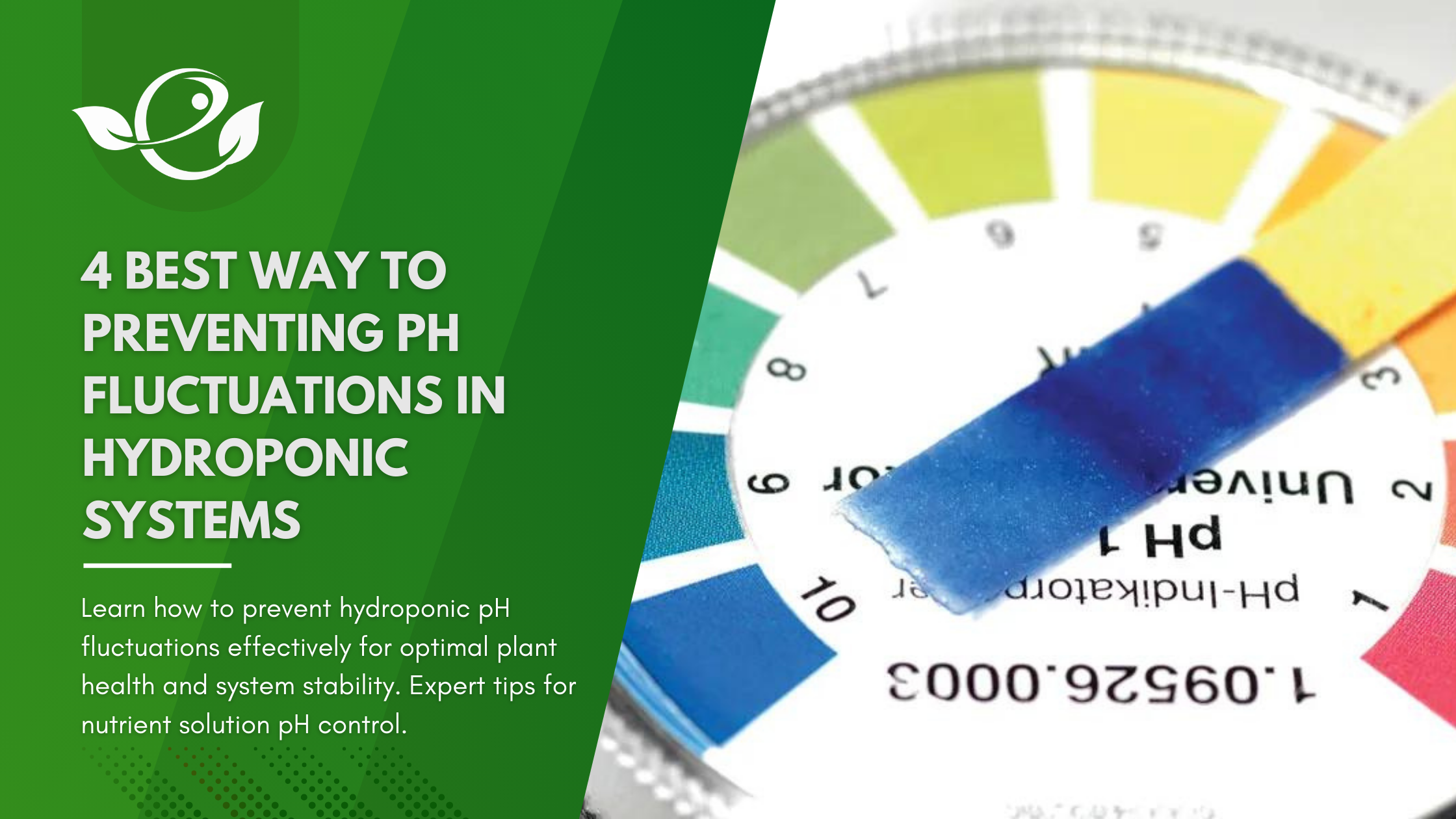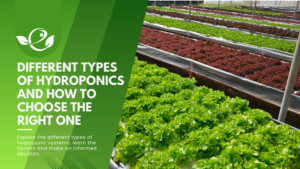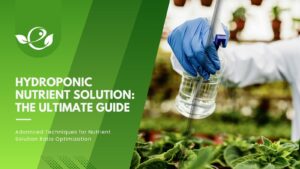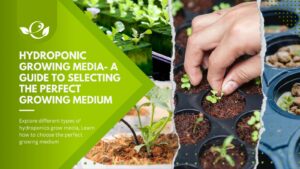Table of Contents
Hydroponic systems offer an efficient and controlled environment for cultivating plants without soil. However, one of the critical factors influencing plant growth and health in hydroponics is pH balance. In this comprehensive guide, we’ll delve into the intricacies of managing pH fluctuations in hydroponic systems, from understanding the fundamentals to implementing advanced techniques.
Hydroponics revolutionizes traditional agriculture by providing a soilless environment where plants receive nutrients directly through water. However, maintaining optimal pH levels is crucial for maximizing nutrient uptake and overall plant health. In this article, we’ll explore the importance of pH balance in hydroponic systems and delve into effective strategies for managing pH fluctuations.
Understanding pH in Hydroponic Systems
A. Explanation of pH Scale
The pH scale measures the acidity or alkalinity of a solution, ranging from 0 to 14. A pH of 7 is considered neutral, while values below 7 indicate acidity and values above 7 indicate alkalinity.

B. Optimal pH Range for Hydroponic Cultivation
In hydroponics, the ideal pH range for nutrient uptake typically falls between 5.5 and 6.5. This range ensures that essential nutrients remain soluble and readily available to plants.
C. Factors Influencing pH Fluctuations
- Nutrient Solutions: The composition of nutrient solutions can affect pH levels. Imbalances in nutrient concentrations can lead to pH fluctuations.
- Water Quality: Source water pH and mineral content play a significant role in determining the initial pH of the nutrient solution.
- Microbial Activity: Microorganisms in the hydroponic system can influence pH through nutrient breakdown and release of metabolic byproducts.
- Plant Uptake: Plant uptake of nutrients can alter the pH of the nutrient solution, especially if certain ions are preferentially absorbed.
D. Consequences of pH Imbalances
pH imbalances can have detrimental effects on plant health and growth, including:
- Nutrient deficiencies or toxicities
- Reduced nutrient uptake
- Stunted growth and lower yields
- Increased susceptibility to pests and diseases
Monitoring pH Levels
A. Importance of Regular pH Monitoring
Regular pH monitoring is essential to ensure that nutrient solutions remain within the optimal range for plant growth. Monitoring allows growers to detect pH fluctuations early and take corrective action.
B. Tools for pH Measurement
- pH Meters: Digital pH meters provide accurate and precise pH measurements and are essential for commercial-scale hydroponic operations.
- pH Test Kits: Test kits offer a more affordable option for hobbyist growers and provide a qualitative indication of pH levels.
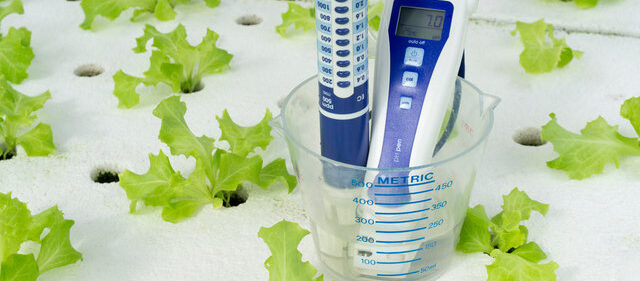
C. Frequency of pH Testing
The frequency of pH testing depends on factors such as plant type, nutrient solution composition, and system stability. As a general guideline, pH should be monitored at least once daily in commercial operations and weekly for hobbyist setups.
D. Recording and Tracking pH Data
Maintaining detailed records of pH measurements allows growers to track trends over time and identify patterns or recurring issues. Digital spreadsheets or specialized software can facilitate data management and analysis.
Strategies for pH Adjustment
A. Preparing pH-Adjusted Water
Adjusting the pH of water before adding nutrients is a proactive approach to maintaining pH stability in hydroponic systems. pH-adjusted water serves as a baseline for nutrient solution preparation.
B. pH Buffering Agents
- Role of Buffers: Buffers help stabilize pH by resisting changes in acidity or alkalinity when acids or bases are added. Common buffering agents in hydroponics include bicarbonates and phosphates.
- Types of Buffers: Selecting the appropriate buffer depends on the target pH range and nutrient solution composition.
C. Corrective Measures for pH Imbalance
- pH Up/Down Solutions: Commercial pH adjusting solutions are available to raise (pH up) or lower (pH down) pH levels as needed.
- Natural Remedies: Some growers prefer natural alternatives such as vinegar (acetic acid) or citric acid to adjust pH, especially in organic or sustainable cultivation systems.
D. Gradual Adjustment vs. Rapid Correction
Gradual pH adjustment minimizes stress on plants and helps prevent drastic fluctuations that can shock root systems. However, rapid pH correction may be necessary in emergency situations to prevent crop loss.
4 Best way to Preventing pH Fluctuations
1. Maintaining Proper Nutrient Solution Ratios
Balanced nutrient solutions reduce the risk of pH fluctuations by providing plants with essential elements in the correct proportions. Regular monitoring and adjustment of nutrient concentrations are crucial for preventing imbalances.
2. Managing Water Quality
- pH of Source Water: Testing and adjusting the pH of source water before nutrient solution preparation can help prevent initial pH fluctuations.
- Water Temperature: Warm water tends to have a lower pH, while cold water may have a higher pH. Monitoring water temperature and adjusting accordingly can help maintain stable pH levels.
- Water Oxygenation: Adequate oxygenation of water promotes microbial balance and nutrient uptake while reducing the risk of pH fluctuations caused by anaerobic conditions.
3. Sterilization and Sanitation Practices
Maintaining clean and sterile hydroponic systems minimizes the growth of harmful microorganisms that can alter pH levels and compromise plant health.
4. Root Zone pH Management Techniques
Root zone pH can differ from the overall nutrient solution pH due to localized nutrient uptake. Techniques such as periodic leaching or root zone drenching with pH-adjusted solutions can help maintain optimal root zone conditions.

Advanced pH Management Techniques
A. Automated pH Controllers
Automated pH controllers offer precise control over pH levels by continuously monitoring and adjusting pH as needed. These systems are ideal for large-scale operations or growers seeking maximum efficiency.
B. Recirculating Systems
Recirculating hydroponic systems recirculate nutrient solution, allowing for more stable pH control compared to drain-to-waste systems. Implementing recirculating systems requires careful monitoring and maintenance to prevent nutrient imbalances.
C. pH Monitoring Apps and Software
Digital tools and software applications provide growers with real-time pH monitoring and data analysis capabilities. These tools streamline pH management and facilitate remote monitoring for greater convenience.
D. pH Stabilization Through Microbial Inoculants
Beneficial microorganisms can help stabilize pH by promoting nutrient cycling and maintaining a balanced microbial community. Incorporating microbial inoculants into hydroponic systems can enhance nutrient uptake and improve overall system resilience.
Troubleshooting pH Issues
A. Identifying Common pH Problems
- pH Drift: Gradual pH shifts over time, often due to changes in nutrient concentrations or microbial activity.
- pH Lockout: Sudden pH changes that inhibit nutrient uptake, leading to nutrient deficiencies.
- pH Spikes: Abrupt increases or decreases in pH, typically caused by external factors such as nutrient overdosing or equipment malfunction.
B. Diagnosing Underlying Causes
Analyzing pH trends and system parameters can help pinpoint the root causes of pH fluctuations, whether it be nutrient imbalances, water quality issues, or equipment malfunction.
C. Implementing Corrective Actions
Once the underlying causes are identified, growers can take appropriate corrective actions such as adjusting nutrient ratios, recalibrating equipment, or implementing preventive measures to stabilize pH.
Conclusion
In conclusion, maintaining optimal pH balance is essential for maximizing plant health and productivity in hydroponic systems. By understanding the factors influencing pH fluctuations and implementing effective management strategies, growers can ensure consistent crop yields and minimize the risk of pH-related issues. Continuous monitoring, proactive maintenance, and a thorough understanding of pH dynamics are key to achieving success in hydroponic cultivation.
FAQs (Frequently Asked Questions)
How often should I test the pH in my hydroponic system?
pH should be tested regularly, ideally daily for commercial operations and weekly for hobbyist setups, to ensure nutrient solution remains within the optimal range for plant growth.
What is the optimal pH range for hydroponic cultivation?
The ideal pH range for hydroponic cultivation typically falls between 5.5 and 6.5, ensuring optimal nutrient uptake and plant health.
What tools do I need to measure pH in my hydroponic system?
pH meters or pH test kits are essential tools for measuring pH in hydroponic systems. pH meters offer precise measurements, while test kits provide a more affordable option for hobbyist growers.
What are the consequences of pH imbalances in hydroponics?
pH imbalances can lead to nutrient deficiencies or toxicities, reduced nutrient uptake, stunted growth, and increased susceptibility to pests and diseases.
How can I prevent pH fluctuations in my hydroponic system?
Maintaining proper nutrient solution ratios, managing water quality, implementing sterilization and sanitation practices, and employing root zone pH management techniques can help prevent pH fluctuations.
